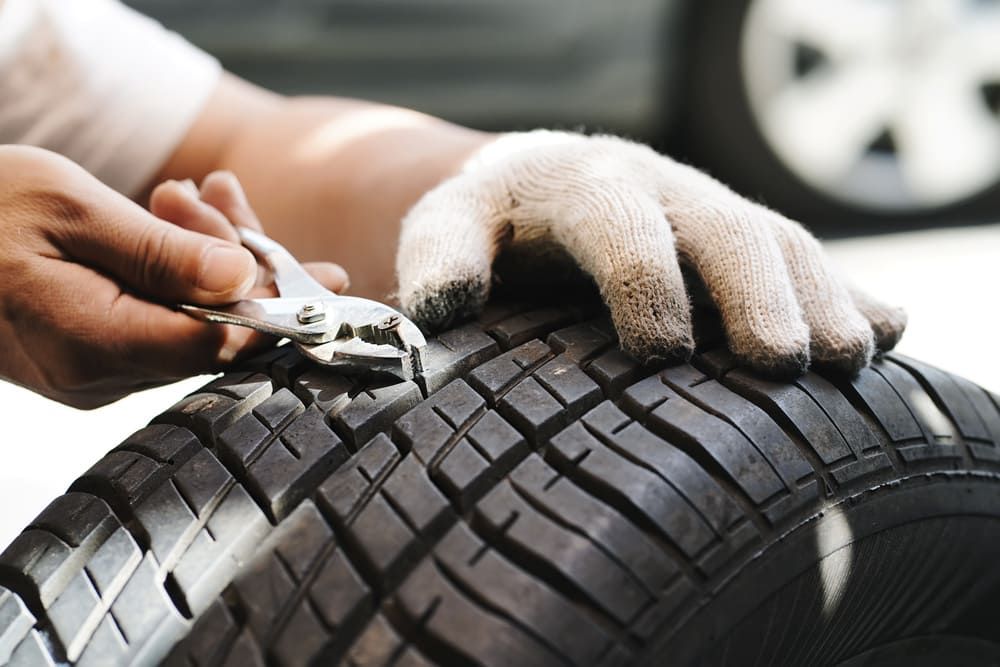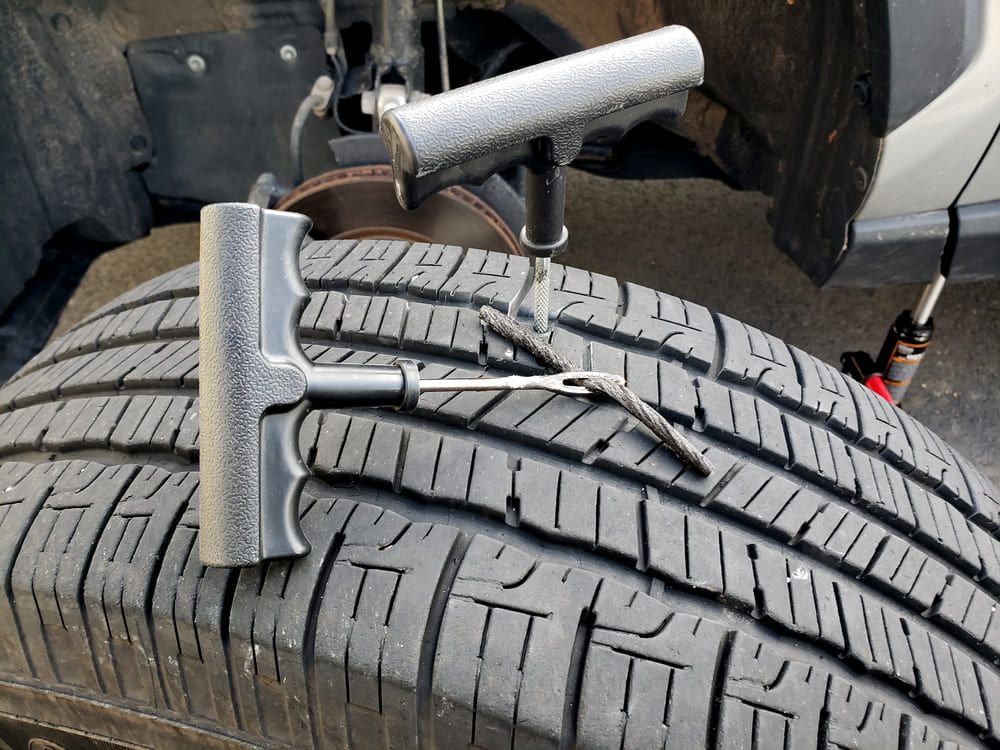>
Blog>
Tyre Puncture Repair CostTyre Puncture Repair Cost
With how expensive certain brands and types of tyres are nowadays, being able to repair a puncture can be a great money saver, should a nail or some other piece of debris find its way into the tread.
But how much does tyre puncture repair cost, and when can it be done?
Key Takeaways
- How much does a puncture repair cost?
- When can a tyre be repaired?
- Can a garage refuse to repair a tyre?
- Can run-flat tyres be repaired?
- How to avoid tyre punctures
How much does tyre puncture repair cost?
In the UK, tyre repair typically costs between £30 and £40 per tyre.
Naturally, this figure varies by location, type of tyre to be repaired and the type of shop you go to. National chains often have online deals or coupon codes you can make use of, but local independent repair shops may be more flexible with bookings.

When can a tyre be repaired?
Typically, tyre repairs can be done if
- The damage is small, under 6mm in diameter
- The damage is in the tread of the tyre, not the sidewall or shoulder
- The tyre is not a run-flat type
- The tyre has not been damaged further by driving on it when flat
- The tyre hasn’t received a repair in the same location before
Most garages will follow the same rules on when a tyre can or cannot be repaired, these are generally dictated by the British standard BSAU 159 - which can be found online.
Can a garage refuse to repair a tyre?
Whilst the standard above is quoted by most garages as the defining guide on what can and cannot be repaired, each company is likely to have its own policy on this.
This company-specific policy is likely to be more cautious than the British standard, for liability reasons, so in some cases a garage will decline to repair a tyre, instead advising you to buy a new one.
Can run-flat tyres be repaired?
No, run-flat tyres cannot be repaired, even if the damage is in the main portion of tread, and is smaller than the max permissible size.
Run flat tyres are designed to allow the car to be driven a short distance - typically around 50 miles - after a puncture. However, this causes irreparable damage to the tyre’s sidewall, so the tyre should no longer be used.

How to avoid tyre damage
Getting a puncture is annoying at best, and can sometimes be very expensive if the tyre can't be fixed. Here are some tips to avoid damaging your tyres:
- Avoid driving up curbs if possible; if you have to, get as perpendicular to the curb as possible
- Don’t drive too close to the curb or central reservation on main roads - this is where all the debris, such as nails and broken glass, accumulates
- Ensure your tyres are properly inflated
- Maintain a safe distance from the car in front - to give you a clearer view of the road, and any debris that might be on it
Split the cost of expensive repairs with Bumper's car repair finance. Choose from 1000s of garages and apply online before your visit.
Author - Joseph Law
Joseph has been writing about cars for over eight years and writing for Bumper for over three, blending his passion for automobiles with a talent for storytelling.
Joseph has written about engineering and cars for Autozilla, Komaspec, and several engineering manufacturers. When he's not writing or tinkering with one of his cars, Joseph dreams of owning an Alfa Romeo 33 Stradale.
Related Posts